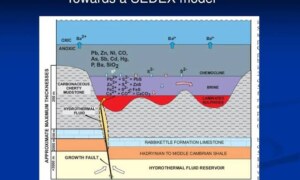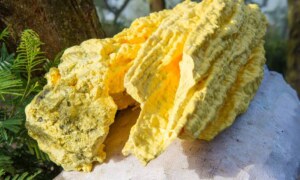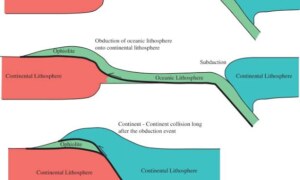Introduction to Bowen’s Reaction Series
Bowen’s Reaction Series is a fundamental concept in igneous petrology that explains the sequence of mineral crystallization in a cooling magma. This concept, developed by Norman L. Bowen in the early 20th century, has become a cornerstone in understanding how igneous rocks form and the mineralogical diversity found in them. Whether you’re a geology student or a professional geologist, understanding this series is crucial for interpreting rock-forming processes and the Earth’s crust’s evolution.
Importance of Bowen’s Reaction Series
For Students: It helps in understanding the mineral composition of igneous rocks and the conditions under which they form.
For Professionals: It provides insights into magmatic differentiation and is used in mineral exploration, petrology, and geothermal studies.
The Structure of Bowen’s Reaction Series
Bowen’s Reaction Series is divided into two branches:
- The Discontinuous Series
- The Continuous Series
Discontinuous Series
The discontinuous series describes the formation of distinct silicate minerals as magma cools. Each mineral forms and reacts with the melt to produce the next mineral in the sequence.
Sequence of Minerals in the Discontinuous Series:
Olivine: The first mineral to crystallize at high temperatures (approximately 1200°C–1300°C). It is a magnesium-iron silicate with the formula (Mg,Fe)₂SiO₄.
Pyroxene: As magma cools, olivine reacts with the melt to form pyroxene, a group of single-chain silicates.
Amphibole: At lower temperatures, pyroxene transforms into amphibole, a double-chain silicate.
Biotite: Finally, amphibole reacts to form biotite, a mica mineral that crystallizes at relatively low temperatures.
Continuous Series
The continuous series describes the gradual change in the composition of plagioclase feldspar as it crystallizes. This series is characterized by the replacement of calcium by sodium in the crystal structure.
Sequence of Minerals in the Continuous Series:
Calcium-Rich Plagioclase (Anorthite): Forms at high temperatures.
Intermediate Plagioclase: Represents a transition between calcium-rich and sodium-rich plagioclase.
Sodium-Rich Plagioclase (Albite): Forms at lower temperatures.
Key Features of Bowen’s Reaction Series
- Temperature Dependency: Minerals crystallize in a specific order based on temperature, starting with high-temperature minerals like olivine and ending with low-temperature minerals like quartz.
- Magmatic Differentiation: Bowen’s Reaction Series explains how different types of igneous rocks form from a single magma body.
- Mineral Stability: The series highlights the stability of minerals under varying temperature and pressure conditions.
Applications of Bowen’s Reaction Series
- Rock Classification
Bowen’s Reaction Series helps in classifying igneous rocks into mafic, intermediate, and felsic categories based on their mineral composition.
- Understanding Magmatic Processes
Professionals use this series to study magmatic differentiation, fractional crystallization, and partial melting.
- Mineral Exploration
The sequence is vital in locating specific minerals associated with igneous processes, such as olivine in ultramafic rocks or quartz in granitic rocks.
- Geothermal Studies
The series aids in understanding the thermal history of magmatic systems and geothermal reservoirs.
Diagram of Bowen’s Reaction Series
A diagram of Bowen’s Reaction Series is essential for visualizing the sequence of mineral formation. It typically includes:
Vertical Axis: Temperature (from high to low).
Branches: Discontinuous (olivine → pyroxene → amphibole → biotite) and Continuous (calcium-rich → sodium-rich plagioclase).

Bowen’s Reaction Series is a crucial framework for understanding the crystallization of minerals in igneous rocks. Its principles have wide-ranging applications in geology, from rock classification to mineral exploration. Whether you’re a student learning the basics or a professional analyzing magmatic processes, mastering this concept is fundamental to advancing your geological expertise.
Keywords: Bowen’s Reaction Series, mineral crystallization, igneous rocks, petrology, magmatic differentiation, olivine, pyroxene, plagioclase feldspar.




Leave a comment